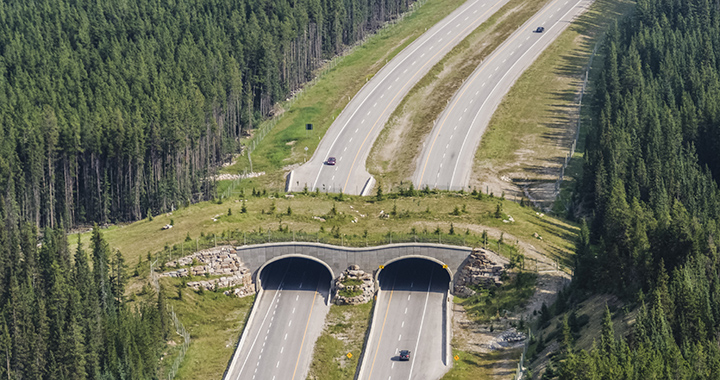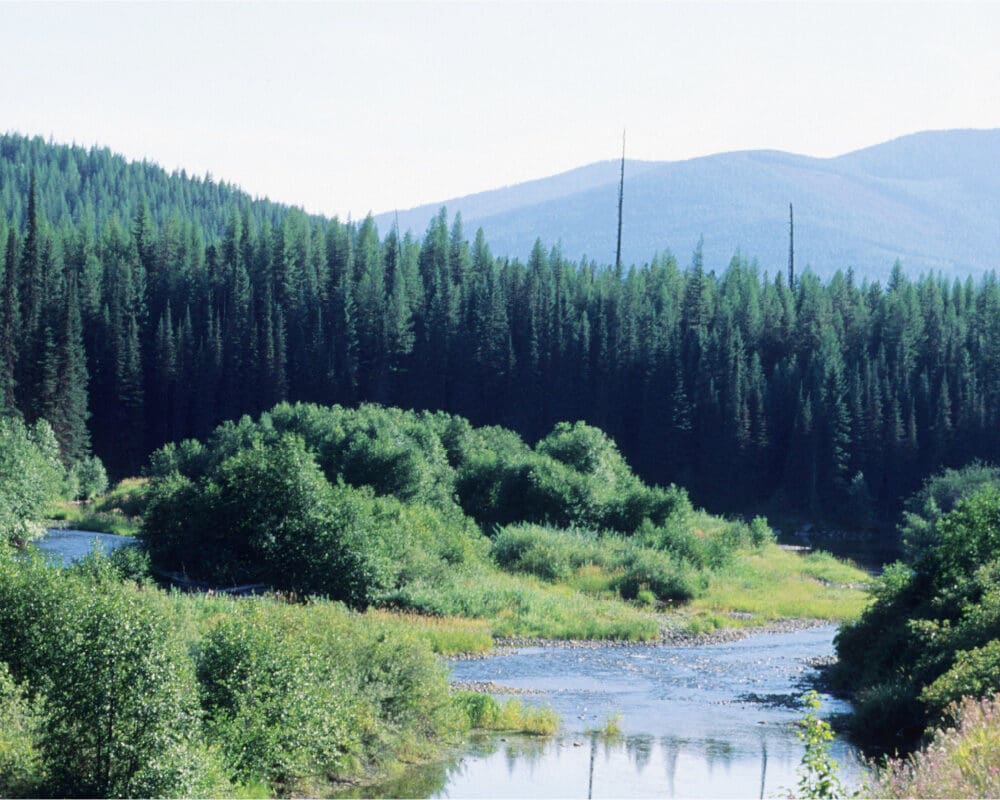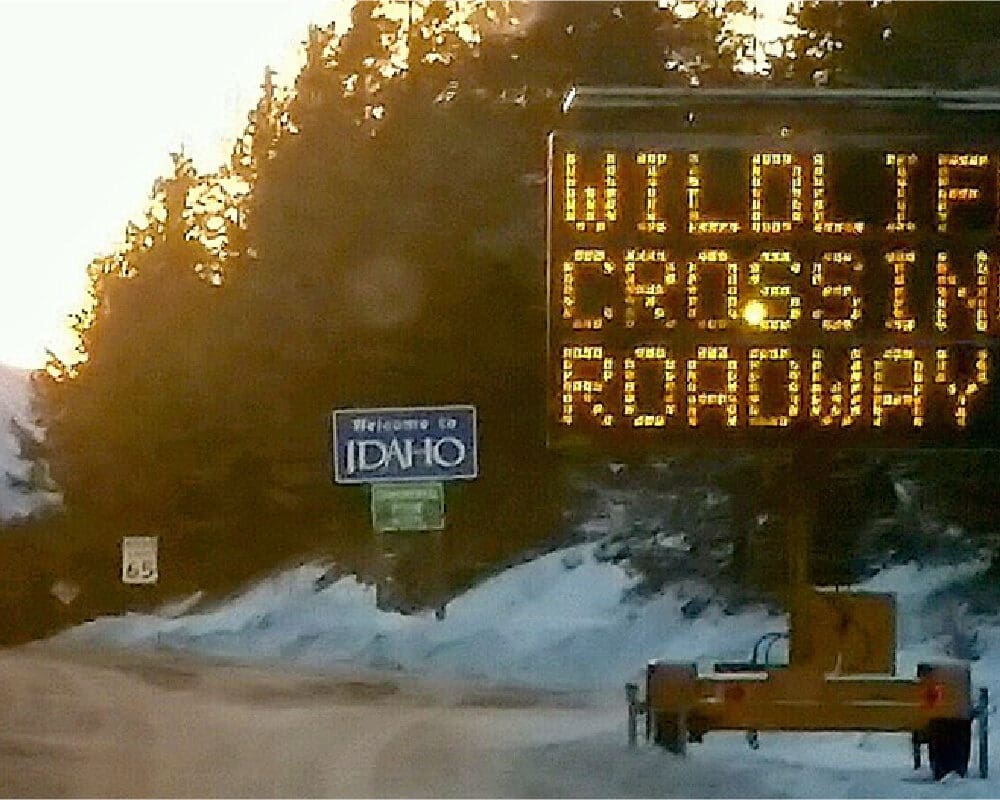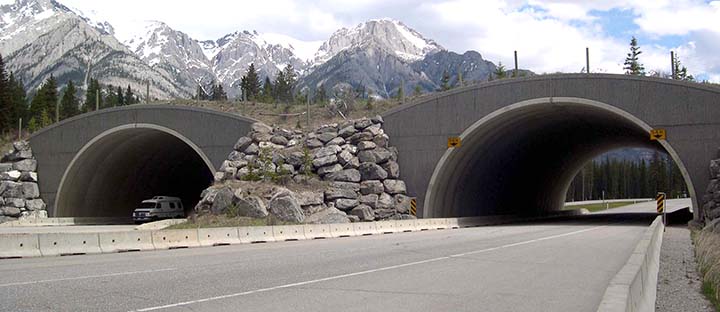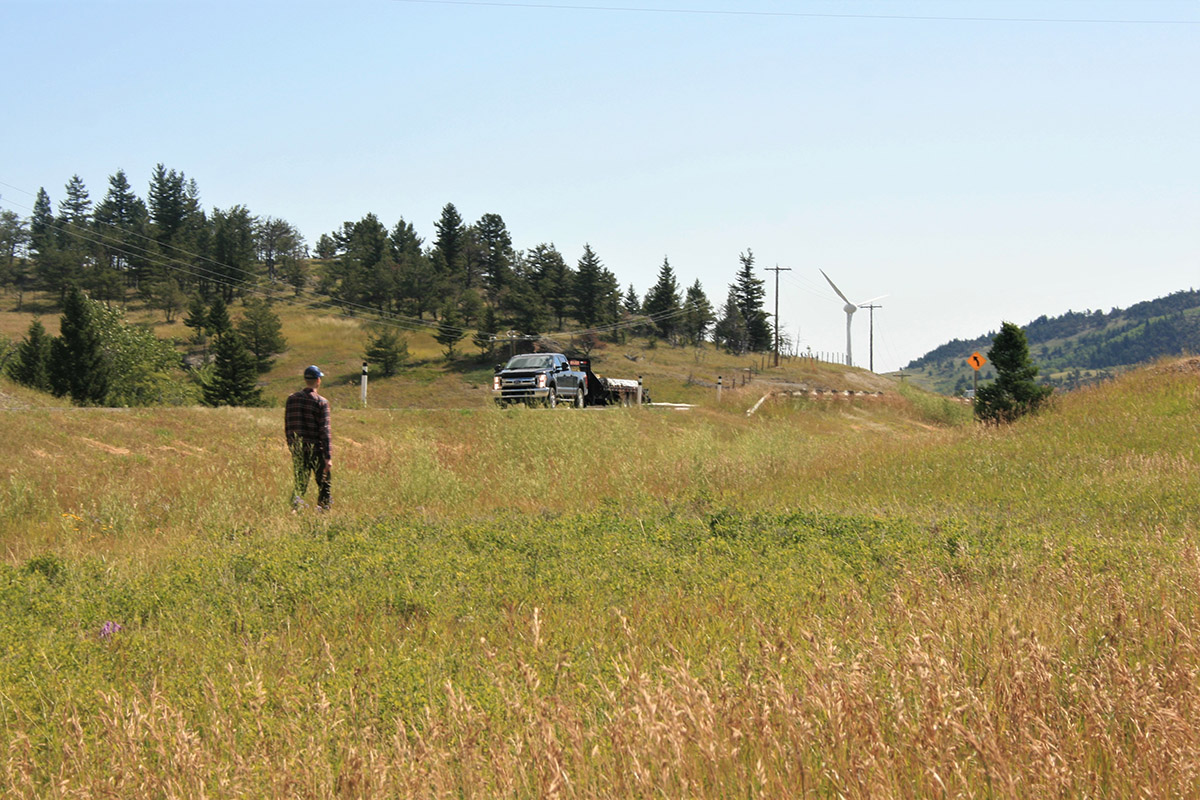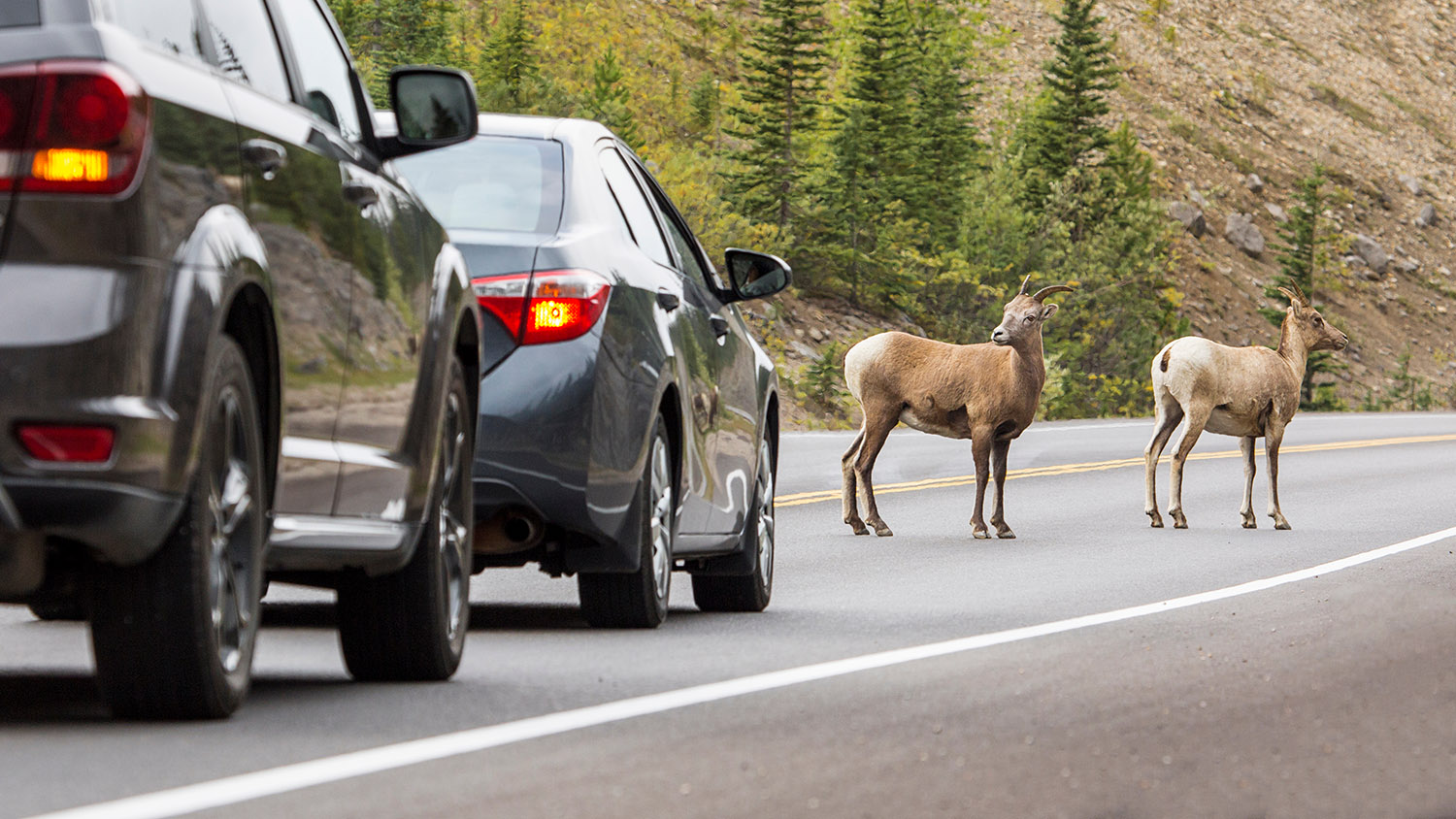Animal over- and underpasses are a huge conservation success story!
Ever wonder if animals really use those bridges to cross highways? They do! And not because they’re following signs.
Combining fencing with over- or underpasses together helps wildlife stay safe. That includes large species such as grizzly bears and elk and smaller ones, such as western toads and salamanders.
The fencing is an important part of these crossings, as it helps guide and funnel wildlife to the right spot and keeps them off the road.
How do we know they work?
Years of research using tools such as hair snags and wildlife cameras have shown these crossings are being used, and frequently. The system of 38 underpasses and six overpasses and fencing on 82 km of the Trans-Canada Highway in Banff National Park are also the longest ongoing wildlife crossing research and monitoring program in the world.
Cameras at each of the passageways have recorded hundreds of thousands of wildlife using these crossings, including species regularly seen such as elk and deer but also wolverines and grizzly bears, species rarer to see.
The hair snags help determine if the grizzly bears using the crossings are the same or different individuals.
Highway fencing and crossings in Banff National Park have reduced wildlife-vehicle collisions by more than 80 per cent and for elk and deer alone, by more than 96 per cent.
A recent study of Montana crossings found that animals in were 146 percent more likely to use the crossings than to cross at a random location.
How do different animals use the crossings?
Different animals have a different approach to using the crossings. Some examples:
Grizzly bears and wolves
There is a “learning curve” for animals to begin using wildlife crossings. For wary animals like grizzly bears and wolves, it may take up to five years before they feel secure using newly built crossings.
Cougars and black bears
Researchers have learned that different wildlife species prefer different types of crossing structures. Grizzly bears, elk, moose and deer prefer wildlife crossings that are high, wide and short in length, including overpasses. Cougars and black bears prefer long, low and narrow crossings.
Elk
Elk were the first large species to use the crossings, even using some while they were under construction!
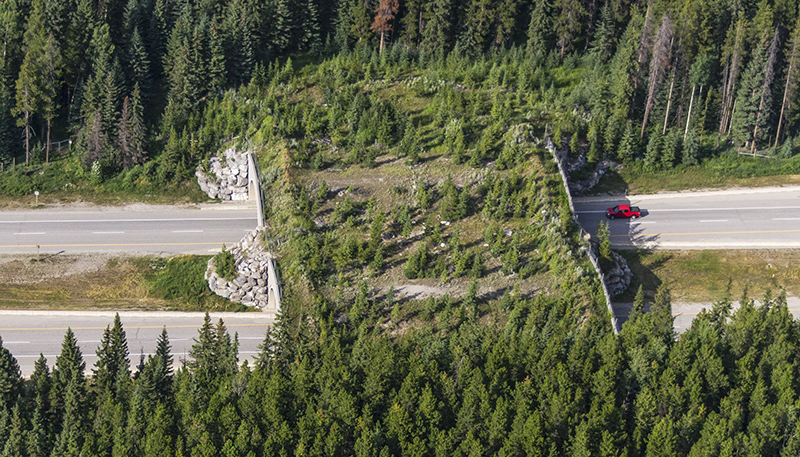
What do the tops of the crossings look like?
The overpasses in Banff National Park are landscaped with soil, plants and trees to help them look like surrounding habitat. The underpasses are low and darker, providing the cover some species prefer.
Do predators use these crossings like traps?
A common question about crossings and fencing is if predators use the corridors to more easily trap prey. The short answer is no.
Between 2012 and 2015, researchers from University of Alberta looked into this idea in a series of 17 crossings in Quebec’s Laurentides Wildlife Reserve.
After examining photos of more than 11,000 mammals using wildlife underpasses, they did not find any evidence of predators taking advantage of the crossing design to capture their dinner.
Additional evidence shows that the carnivores, including wolves, coyotes or lynx, did not follow prey into the passages, either. So it appears these crossings do not provide the easy meal they might seem to.
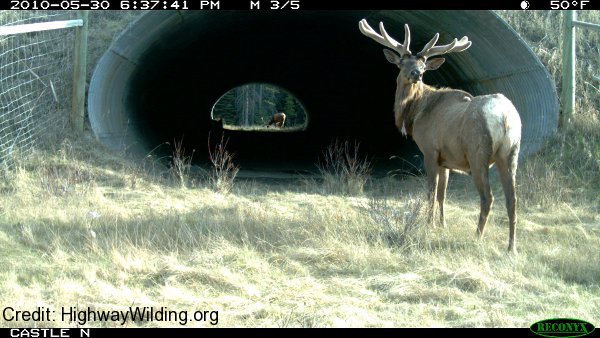
Over and under, species of all sorts like crossings
Overpasses and fencing may be easier to see while driving on a highway, but underpasses are commonly used for wildlife, too. See what species are caught on camera using this underpass just east of Alberta’s Banff National Park, like the elk above.
Why does keeping wildlife connected matter?
Besides preventing horrific and dangerous wildlife-vehicle collisions, allowing animals to safely move is good for their long-term health — and ours, too!
Healthy wildlife populations need to include animal movement, so that individuals can disperse, find mates, successfully reproduce, and maintain their genetic diversity. Keeping wildlife, including grizzly bears and wolverines, connected means they can move, and that means they can breed.
Y2Y looks for critical linkages that are either fractured or broken and fix them so animals can keep moving.
Creating safe passage from Yellowstone to Yukon
Learn more about our current projects to help wildlife and people move more safely across roads cutting across the region:
